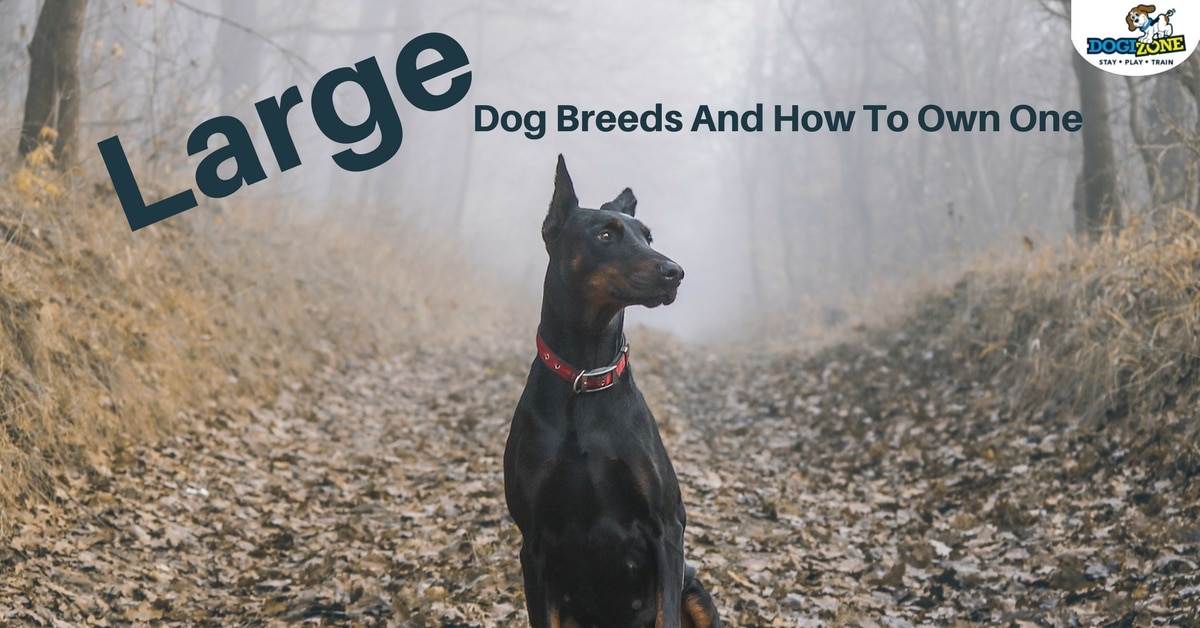Large Dog Breeds And How To Own One
Owning Large Dog Breeds
There is no absolute determination as to what separates a dog from a medium to large sized breed. As a general guideline, weight is often a simple way to differentiate.
Dogs that are classified as the toy breeds will weigh just a few pounds at maturity, typically not more than 10, but this will vary by specific breed or mix. Small dogs are generally those 10 to 25 pounds with medium dogs 25 to 55-60 pounds. The large breeds of dogs are typically those that are 55 to 90 pounds at maturity, with some guides allowing up to 100 pounds. Any dogs over the 90 to 100-pound range are considered the giant breeds.
Some good examples of breeds that would fit into the large dog category include the Akita, Doberman Pinscher, German Shepherd Dog, Golden Retriever and Lab as well as Rottweiler, Weimaraner and most of the setters. Northern breeds such as Malamutes and Siberian Huskies as well as most of the hounds will also be considered to be large dog breeds.
The large breeds tend to have a slightly longer life than the giant breeds, with typical life expectancy at 10 to 12 years. Many of these dogs will live to the 13-15 year range, but fitness, genetics and preventing weight gain as the dog ages will be important.
To understand the reality of living with a large breed, let’s take a closer look at what you can expect from a puppy through to a senior dog.
Puppies and Young Dogs
Large breed dogs tend to mature slower than the toy to medium dogs. While these smaller dogs are considered out of the puppy stage at 12 months, larger dogs are still actively growing until about 15-16 months.
As with all dogs, top quality food will be important. While not as prone to the growth spurts as the giant breeds, it will be essential to ensure these dogs have a healthy, nutritious diet. Your vet can assist in choosing the best food type for your puppy and juvenile dog.
Vet bills for the large breeds, even as puppies, will be higher due to the heavier weight of the dogs which impacts medications, surgical procedures and other factors. Just be sure to plan for this additional cost for most procedures, including spaying and neutering, as well as for flea and tick protection, worming and heartworm medications.
Just like all other puppies, the large breeds will need routine exercise. They also need early and consistent obedience training as they are large enough to be a challenge it if they are not well socialized and trained.
Adult Dogs
While most of the large breeds have a moderate activity level, routine exercise is ideal for these pets. This tends to be a group of dogs that love to be around their people and make good watchdogs, with some well-known for their guarding abilities as well. They are typically great with children and can be very good with other animals as well.
Continued socialization and lots of time spent with the family are ideal for these dogs. Most are very calm and inactive if the family is away during the day or at work, which means they can do well in an apartment or smaller, urban living space if they are exercised routinely and have room to run and play.
It will be important to consider breed traits with the larger dogs. They can be territorial and protective, and many have a strong prey drive based on what the breed was developed to do.
Senior Dogs
The large breed seniors tend to be relaxed and calm dogs. It will be necessary to watch for signs of hip or joint problems with these dogs as they age and start treatment early to limit stiffness or joint pain.
Additionally, these dogs tend to be prone to putting on weight, particularly if they are typically inactive. Keep up a walking routine and carefully monitor food intake to help prevent weight gain for these senior pets.

